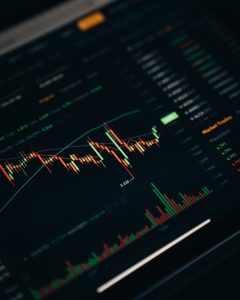Trading daily charts in forex can be a profitable strategy for traders who prefer longer-term trades, have patience, and prefer to avoid the noise of the intraday markets. The daily chart provides a clear view of the market’s direction, and it can be used to identify trends, support and resistance levels, and potential trading opportunities. This article will provide a step-by-step guide on how to trade daily charts in forex.
Step 1: Identify the trend
The first step in trading daily charts is to identify the trend. This can be done by looking at the price action of the currency pair over a long period, usually several months or even years. The trend can be either up, down, or sideways, and it’s important to determine the direction of the trend before placing any trades.
One way to identify the trend is by using moving averages. Traders can use two simple moving averages, one with a shorter period and one with a longer period, and look for the crossover of these moving averages. If the shorter moving average crosses above the longer moving average, it’s a sign of an uptrend, and if the shorter moving average crosses below the longer moving average, it’s a sign of a downtrend.
Step 2: Identify support and resistance levels
Once the trend has been identified, the next step is to identify support and resistance levels. These are the levels where the price has previously bounced off or stalled, and they can be used to enter or exit trades.
Support levels are areas where the price has previously found support and bounced back up. Resistance levels are areas where the price has previously found resistance and bounced back down. Traders can use these levels to identify potential entry and exit points.
Step 3: Plan your trades
After identifying the trend and support and resistance levels, traders can start planning their trades. Traders can use a variety of tools and indicators to determine their entry and exit points, including price action, candlestick patterns, and technical indicators.
One popular technical indicator used by traders is the Relative Strength Index (RSI). The RSI measures the strength of the price action and can be used to identify overbought and oversold conditions. Traders can use the RSI to enter trades when the price is oversold and exit trades when the price is overbought.
Step 4: Manage your risk
Managing risk is crucial in forex trading, and traders should always have a risk management plan in place. Traders should always use stop-loss orders to limit their losses and should never risk more than they can afford to lose.
Traders should also consider their position size when trading daily charts. Position size refers to the amount of money a trader is willing to risk on a single trade. Traders should only risk a small percentage of their trading account on each trade, usually no more than 2-3%.
Step 5: Monitor your trades
Once a trade has been placed, traders should monitor their trades closely. Traders should keep an eye on the price action and adjust their stop-loss orders if necessary.
Traders should also be prepared to exit their trades if the market conditions change. If the price starts to move against the trade, it may be time to exit the trade and cut losses.
Conclusion
Trading daily charts in forex is a profitable strategy for traders who prefer longer-term trades and have patience. Traders should identify the trend, support and resistance levels, and plan their trades accordingly. Risk management is crucial, and traders should always use stop-loss orders and never risk more than they can afford to lose. By following these steps, traders can successfully trade daily charts in forex and achieve their trading goals.





